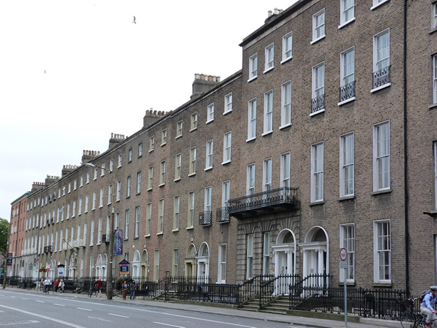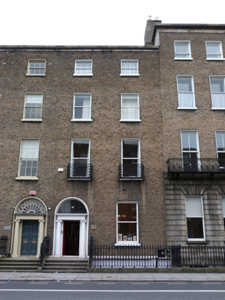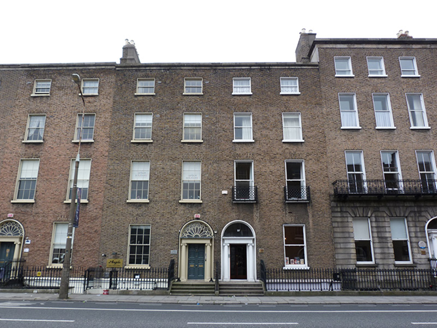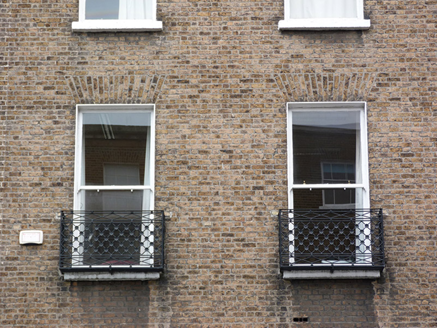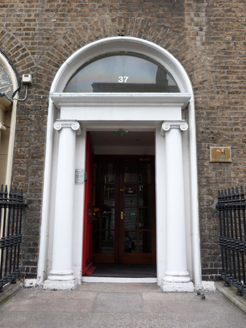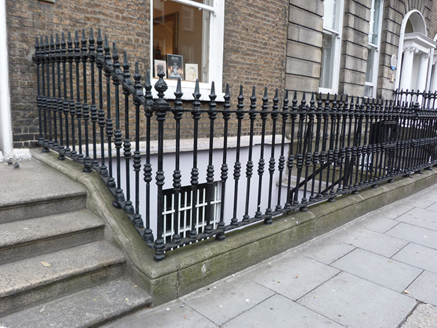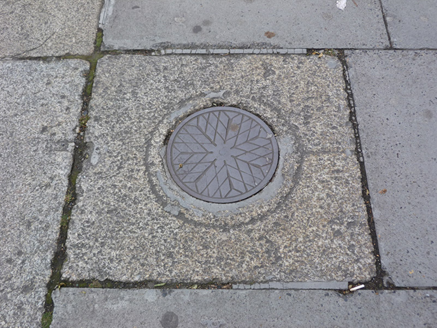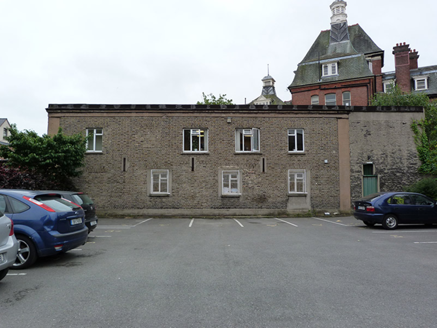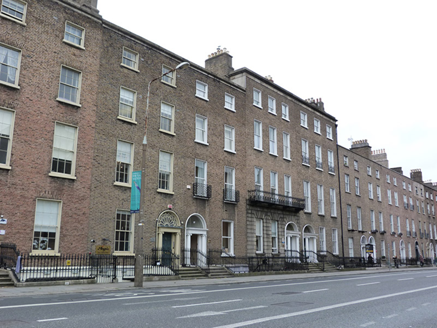Survey Data
Reg No
50110498
Rating
Regional
Categories of Special Interest
Architectural, Artistic, Social
Original Use
House
In Use As
Office
Date
1820 - 1840
Coordinates
316333, 232859
Date Recorded
23/06/2017
Date Updated
--/--/--
Description
Terraced two-bay four-storey former house over basement, built c. 1830, as pair with No. 38, having two and three-storey returns to rear (west) elevation. Now in use as offices. M-profile pitched roof, hipped to south, hidden behind granite parapet having carved granite cornice. Brick chimneystacks with clay pots. Brown brick, laid in Flemish bond, to walls to front and rear elevations, cut granite plinth course over rendered walls to basement to front. Rendered walls to returns. Square- and round-headed window openings, having raised render reveals and granite sills. Wyatt windows to rear. Timber sliding sash and replacement windows. Cast-iron balconettes to first floor. Round-headed door opening with moulded render surround and carved stone doorcase comprising Ionic columns and entablature. Plain fanlight and timber panelled door. Nosed granite steps and platform. Cast-iron railings having spear-head finials and decorative collars, set on cut granite plinth wall. Cast-iron coal hole cover set in granite pavior to footpath to front. Detached five-bay two-storey outbuilding to rear.
Appraisal
Part of a uniform terrace, this elegant building maintains the parapet height and fenestration alignment of neighbouring buildings to the south, making a pleasing contribution to the streetscape. The decreasing scale of fenestration creates a balanced façade, enhanced by the retention of salient features, notably a well-executed doorcase and decorative balconettes. The outbuilding to the rear belongs to No. 36 to the north and is an unusual survivor on the street. One of a group of ten houses built by the developer Captain James Dombrain, it was leased to Leonard Bickerstaff in 1837. The building is one of three now belonging to the Jesuit community. The road leading from St. Stephen’s Green to Donnybrook was originally called Suesey Street. It was renamed Leeson Street in 1728 to commemorate the Leeson brewing family, who were responsible for significant development in the area. Some Early Georgian houses remain but construction predominantly dates from the late eighteenth to mid-nineteenth centuries.
